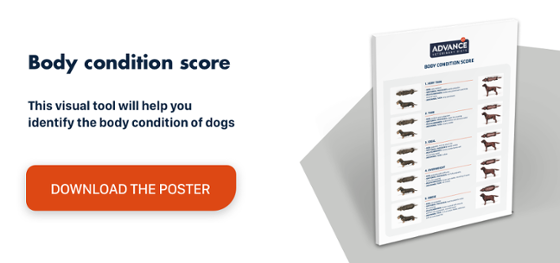Is there really such a thing as caries in dogs?
Caries in dogs is a poorly recognised disease in standard clinical practice, but it can cause severe and irreversible damage to the affected teeth.
Introduction
Dental caries is one of the most common diseases in humans; however, its incidence is much lower in dogs. A study conducted in a referral dental clinic reported that caries affected 5.3% of dogs brought for consultation.1,2
Caries in dogs: pathophysiology
Three conditions need to be met in order for dogs to develop caries: there must be a susceptible dental surface exposed to the oral environment, resident bacterial flora and an intake of food.
Caries develops when bacteria inhabiting the surface of the teeth act on carbohydrates ingested in the diet. These bacteria ferment the carbohydrates and release different acids (lactic, acetic and propionic), which subsequently demineralise the enamel until it exposes the organic protein matrix. The matrix is then digested by oral bacteria and leukocytes. As the process advances, microcavitations develop under the dental surface, before expanding and creating larger cavities and eventually caries.1,3
Under normal conditions there is a constant exchange of minerals between the tooth enamel and the oral fluid, but when this balance is lost, caries begin to take hold. In early stages, caries may be reversible, resulting in “scarring” or remineralisation of the enamel. However, once the organic matrix has been damaged, the damage becomes irreversible. Caries can advance further and affect the pulp, causing pulp necrosis and periapical lesions.1,4 And above all, even though the mechanisms are not precisely understood, caries in dogs may be painful for the patient.2
Why is the incidence of caries lower in dogs than in humans?
This is thought to be down to several factors. These include:
- Dogs have conical teeth;
- Dogs have a wider interdental space than the human denture, so they are likely to retain food debris;
- Dogs eat diets with lower concentrations of fermentable carbohydrates;
- Dog saliva has a higher pH (7.5) than that of humans (6.5), so it provides a buffer effect against the acids produced by bacterial fermentation; and
- Dog saliva also contains low concentrations of amylase, which is needed to break down starch.1
Caries in dogs: progression
The rate of caries progression mainly depends on external factors, such as the cariogenicity of the microflora, the presence of acidogenic substrates and the remineralising capacity of oral fluids. Caries can therefore be classified as acute, chronic or stationary.
Caries in dogs: location
Depending on their location, there are various types of caries: smooth surface, pit and fissure, dentine and cervical or root caries.1,2
Caries in dogs usually occurs on the occlusal surface of the upper first molar and the contact area of the lingual surfaces of the upper fourth premolar and the first upper molar, as well as on the distal occlusal surface of the lower first molar. They are often found on both sides.2
Caries in dogs: diagnosis
The appearance of tooth decay in dogs varies depending on the stage it has reached. In the initial stages, the enamel is notably less shiny, with a matt appearance and small pores. As the dentine is affected, the caries acquires its characteristic brown or even black discolouration. Lesions may contain necrotic material where the dental probe penetrates easily.1
Intraoral dental X-rays are required to confirm the diagnosis and assess if there is any pulp damage that can be repaired by endodontic treatment and the application of a filler; however, if pulp exposure is accompanied by necrosis and loss of crown structure, then extraction of the dental remnant is indicated.1
Radiographically, caries in dogs appear as a radiolucent spherical surface with diffuse margins, although in early stages some may be triangular. 1,3,4
Conclusions
Although caries in dogs does is not a common problem in veterinary consultations, its existence should not be ignored. Considering that if left untreated, caries can lead to tooth loss, so we should do our best to aim for early detection. Given that a proper dental examination usually requires anaesthesia, or at least deep sedation, it is good practice to perform a dental exam whenever patients are anaesthetised for other reasons.
References
-
Hale FA. (2009). Dental caries in the dog. Can Vet J; 50: 1301–1304.
-
Hale FA. (1998). Dental caries in the dog. J Vet Dent;15: 79–83.
-
Bannon KM. (2013). Clinical canine dental radiography. Vet Clin North Am Small Anim Pract; 43: 507–532.
-
Duncan HL. (2010). Diagnostic imaging in veterinary dental practice. Dental caries. J Am Vet Med Assoc. 2010; 237: 41–43.

